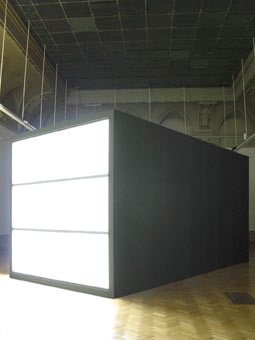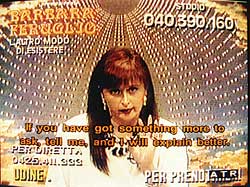
As we all know religion and art have been thoroughly entwined throughout history. Although in 21st C there is not such a great focus on religion, but on the concept of spirituality.
Contemporary art allows the individual to find revelation and transcendence, therefore displacing the experience of spirituality from religion to the realm of individual feeling.The American artist Bill Viola, born in 1951 is a pioneer in the medium of video art and installation and is regarded as one of contemporary times most dynamic artists. Viola’s art addresses universal human experiences which have baffled and confounded man. He raises questions of perception, the mind, reality, meaning, purpose, the soul, death and transcendence 1... All of these ideas amount to one important factor of humanity, which is spirituality. Viola incorporates nature and religion to literally encapsulate spirituality and try to depict it to the modern world through a relevant context. The spectacular technology he uses not only substitute for real experience in the perceptive capacities of the individual, but which promise him or her transcendence over that reality. 2 Viola in a way has almost modernised the idea of spirituality as he uses the typical video form of entertainment to allow the audience to experience the numinous. It’s quite ironic that we now find transcendence through television screen.
Many of his works have roots in Eastern and Western art as well as spiritual traditions, including Zen Buddhism, Islamic Sufism, and Christian mysticism. Using the inner language of subjective thoughts and collective memories, his videos communicate to a wide audience, allowing viewers to experience the work directly, and in their own personal way. 3
An exhibition of viola’s work is currently on display at the national gallery of Victoria, Melbourne. The work known as “Ocean without a shore” takes its title from the Sufi mystic Ibn Arabi (1165–1240). The work explores the threshold between life and death, or as the artist has stated, ‘the presence of the dead in our lives’. 4 The installation is a representation of how human beings are constantly undergoing various states of transformation and renewal relating back to the idea of how humans have developed and changed their sense of spirituality throughout the times. In the installation, three video screens become surfaces for the manifestation of images of the dead attempting to re-enter our world. 5 A physical threshold is created by a ‘sheet’ of cascading water which the individual steps through. The effect looks digitised and synthetic though it is not. The whole sequence has been slowed to create an eerie yet resonating image.
Ocean without a shore was originally installed in a 15th century chapel for the 52nd Venice Biennale in 2007 and directly incorporated the church’s internal architecture by using three existing stone alters as recesses for video screens. For the installation at NGV, the chapel is evoked conceptually through the creation of an intimate space built within an exhibition gallery.
The humanist spirituality that underpins his work is especially pronounced in Ocean without a shore both in its exploration of the afterlife, and the fact that it was originally installed in a religious context. The contrast of the two installation spaces indicates how an abrupt and exhibitions meaning is perceived when displayed in two different contexts.
1. Chris Townsend “The Art of Bill Viola” Chpt 1 (Call me Old-Fashioned, but… Meaning, Singularity and Transcendence in the work of Bill Viola) Thames & Hudson ltc, London 2004 p 25
2. Chris Townsend “The Art of Bill Viola” Chpt 1 (Call me Old-Fashioned, but… Meaning, Singularity and Transcendence in the work of Bill Viola) Thames & Hudson ltc, London 2004 p 12
3. Bill Viola, “Artists Biography” 2006 http://www.billviola.com/biograph.htm (Accessed 2.09.09)
Bill Viola “Ocean Without a Shore” 2009 http://www.ngv.vic.gov.au/billviola/index.html (Accessed 5.09.09)
4. Bill Viola “Ocean Without a Shore” 2009 http://www.ngv.vic.gov.au/billviola/index.html (Accessed 5.09.09)
5. Bill Viola “Ocean Without a Shore” 2009 http://www.ngv.vic.gov.au/billviola/index.html (Accessed 5.09.09)
Bibliography:
Books:
Townsend, Chris “The Art of Bill Viola” Chpt 1 (Call me Old-Fashioned, but… Meaning, Singularity and Transcendence in the work of Bill Viola) Thames & Hudson ltc, London 2004 p 25
Townsend, Chris “The Art of Bill Viola” Chpt 1 (Call me Old-Fashioned, but… Meaning, Singularity and Transcendence in the work of Bill Viola) Thames & Hudson ltc, London 2004 p 12
Websites:
Viola, Bill “Artists Biography” 2006 http://www.billviola.com/biograph.htm (Accessed 2.09.09)
Viola, Bill “Ocean Without a Shore” 2009 http://www.ngv.vic.gov.au/billviola/index.html (Accessed 5.09.09)
Viola, Bill “Ocean Without a Shore” 2009 http://www.ngv.vic.gov.au/billviola/index.html (Accessed 5.09.09)
Images:
All three images: Bill Viola "Ocean Without a Shore" 2009 High definition video and sound installation, size varies (accessed 20.09.09)




































